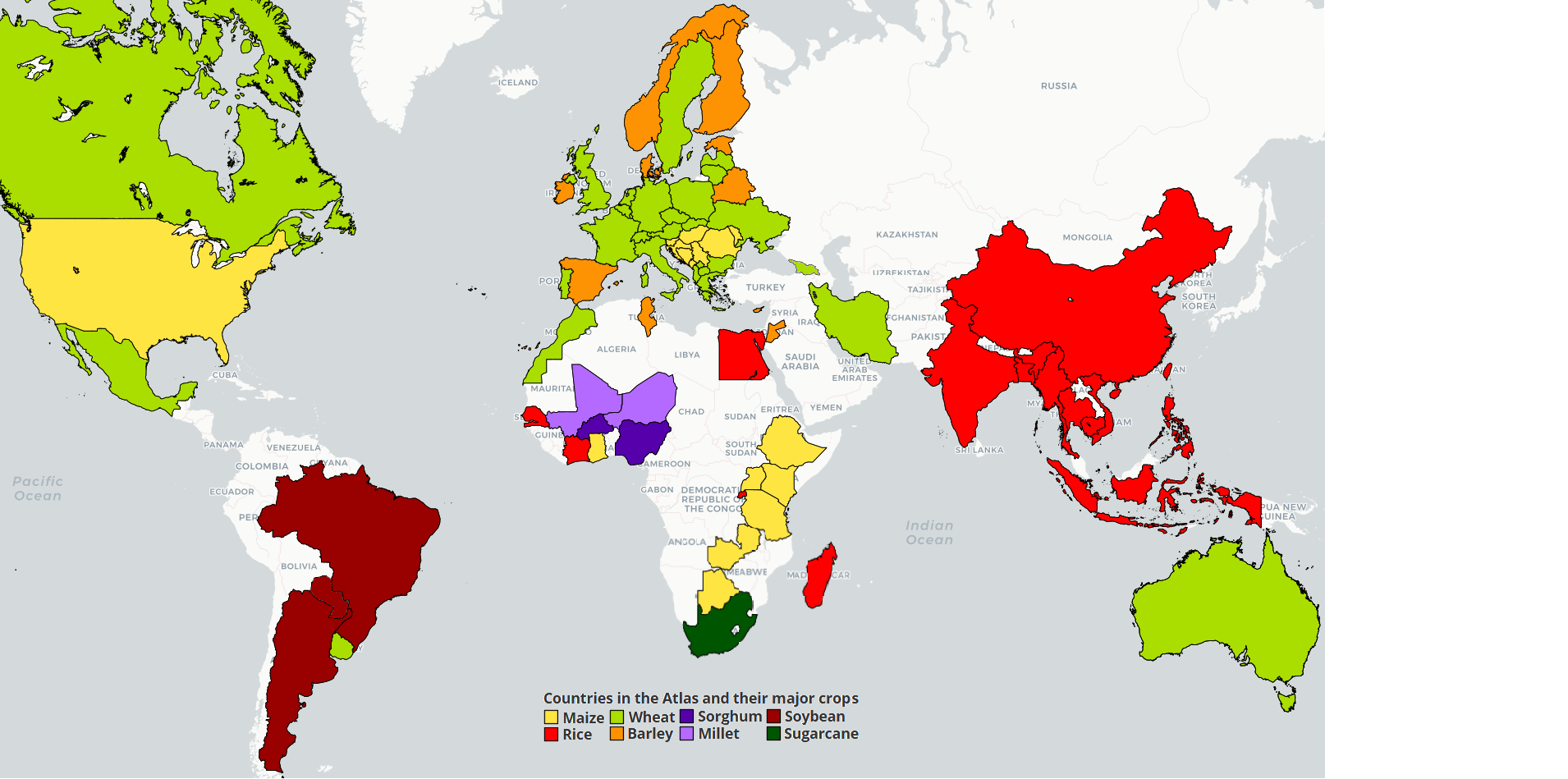 China Cotton
China Cotton
Description
Cotton (Gossypium hirsutum L.) has been considered as an important commodity for millions of smallholder farmers in China. China is the second largest cotton-producing country, which produces 23% of world cotton with 11% of the global cotton area (USDA, 2020). As one of the largest cotton-consuming and importing countries, China imported on average 1.6 MMT of cotton annually in the past three years, accounting for 18 % of global cotton trade (USDA, 2020). It is worth noting that current cotton self-sufficiency ratio of 68% is relatively low. Previous high cotton production relied on large planting areas in three main regions including Huang-Huai-Hai River Valley, Yangtze River Valley, and Xinjiang Uygur Autonomous Region (Hereafter as Xinjiang). As cotton production center moved to Xinjiang, it accounts for 73% of cotton area and 83% of production nationwide currently (average of 2017-2019, NBSC, 2020). At present, Chinese government has established the cotton protected area of 0.73 Mha in major cotton growing provinces other than Xinjiang since 2017 to prevent further area reduction in the other provinces and to relieve the pressure on cotton production in Xinjiang (State Council of China, 2017).
Data Sources and Assumptions (following GYGA protocols) for rice in China
Harvested area
Harvested area of irrigated cotton was originally retrieved from SPAM2010 (http://mapspam.info/). However, due to China's cotton area from SPAM map (2010) being outdated, we calibrated the area of RWSs by using the actual cotton harvested area at the county level within a buffer from national statistics (NBSC) for each RWS. Besides, we removed or added some RWSs according to the cotton area from NBSC. Then we upscaled RWS results to CZ level. While after that, we upscaled CZ results to provincial level based on the weighting average of CZ area that was included in each province. And then, since we have the newest provincial cotton area from NBSC, we upscaled provincial results to national level based on provincial cotton area.
Weather data and reference weather stations (RWS)
More than 10 years of daily weather data (2009-2019) including minimum temperature, maximum temperature, and precipitation of 836 weather stations covering all over China were provided by China Meteorological Administration (CMA) (CMA, 2020). Solar radiation was obtained from the NASA-POWER project (http://power.larc.nasa.gov/).
After considering the cotton area transfer, 28 RWSs located in Xinjiang and 8 RWSs located in Huang-Huai-Hai River Valley were selected following GYGA protocols, (Grassini et al., 2015; van Bussel et al., 2015). In total, the selected RWSs and 8 CZs contained more than 50% and 90% of national cotton area, respectively.
Actual yields
Data of actual yield were collected from statistical yearbooks of National Bureau of Statistics of China. Data of actual yield for 1-5 counties with the largest harvested area within the buffer of each selected RWS were used.
Model calibration
DSSAT CROPGRO-Cotton was used to simulate potential yield. A total of 20 genotype parameters were calibrated to accurately simulate cotton growth. Both GLUE (Generalized Likelihood Uncertainty Estimation) tool integrated into DSSAT and Trial-and-error method were used in calibration. Cotton flowering and maturity duration were calibrated first, and then growth parameters such as biomass of different organs at different growth stages, boll weight, and final yield were calibrated after that.
Cotton management practices
Measured data for model calibration and validation were from high-yielding experiments conducted by cotton experts from universities and institutes in China. Local recommendations for high-yielding cultivation were followed in those experiments, namely, with sufficient water and nutrient supply and strict control of pathogens, incest pests, and weeds to reach the potential yields by using local cultivars.
The work has been published in the journal “European Journal of Agronomy”.
Wang, Y., Peng, S., Huang, J., Zhang, Y., Feng, L., Zhao, W., . . . Deng, N. (2022). Prospects for cotton self-sufficiency in China by closing yield gaps. European Journal of Agronomy, 133. doi:10.1016/j.eja.2021.126437
References
CMA, China Meteorological Administration (2020) China Surface Climate Data Daily Value Dataset V3.0. http://data.cma.cn/data/cdcdetail/dataCode/SURF_CLI_CHN_MUL_DAY_V3.0.html.
Grassini P, van Bussel LGJ, Van Wart J, Wolf J, Claessens L, Yang H, Boogaard H, de Groot H, van Ittersum MK, Cassman KG (2015) How good is good enough? Data requirements for reliable crop yield simulations and yield-gap analysis. Field Crop Res 177:49-63.
He J, Jones JW, Graham WD, Dukes MD (2010) Influence of likelihood function choice for estimating crop model parameters using the generalized likelihood uncertainty estimation method. Agr Syst 103 (5):256-264.
NASA (2020) NASA Prediction of Worldwide Energy Resources Data Access Viewer. https://power.larc.nasa.gov/data-access-viewer.
NBSC, National Bureau of Statistics of the People’s Republic of China (1980-2020) China Statistical Yearbook. China Statistics Press, Beijing, China.
State Council of China (2017) Guiding Opinions of the State Council on the Establishment of Food Production Functional Zones and Important Agricultural Production Protection Zones. http://www.gov.cn/zhengce/content/2017-04/10/content_5184613.htm.
USDA, US Department of Agriculture National Foreign Agricultural Service (2020) Cotton: World Markets and Trade. Version November 2020, United States Department of Agriculture, Washington, DC, USA.
van Bussel LGJ, Grassini P, Van Wart J, Wolf J, Claessens L, Yang H, Boogaard H, de Groot H, Saito K, Cassman KG, van Ittersum MK (2015) From field to atlas: Upscaling of location-specific yield gap estimates. Field Crop Res 177:98-108.
XPCC, Xinjiang Production and Construction Corps (2015) The Xinjiang Production and Construction Crops. http://www.xjbt.gov.cn/c/2015-01-16/531255.shtml.
Yu Q, You L, Wood-Sichra U, Ru Y, Joglekar AKB, Fritz S, Xiong W, Lu M, Wu W, Yang P (2020) A cultivated planet in 2010 - Part 2: The global gridded agricultural-production maps. Earth Syst Sci Data 12:3545-3572
Get access to the Atlas for advanced users
Download GYGA results
 | Please read the license information in case you are interested in using the data from the Global Yield Gap Atlas. |
| read more>> |
 Country agronomist
Country agronomist

Nanyan Deng

